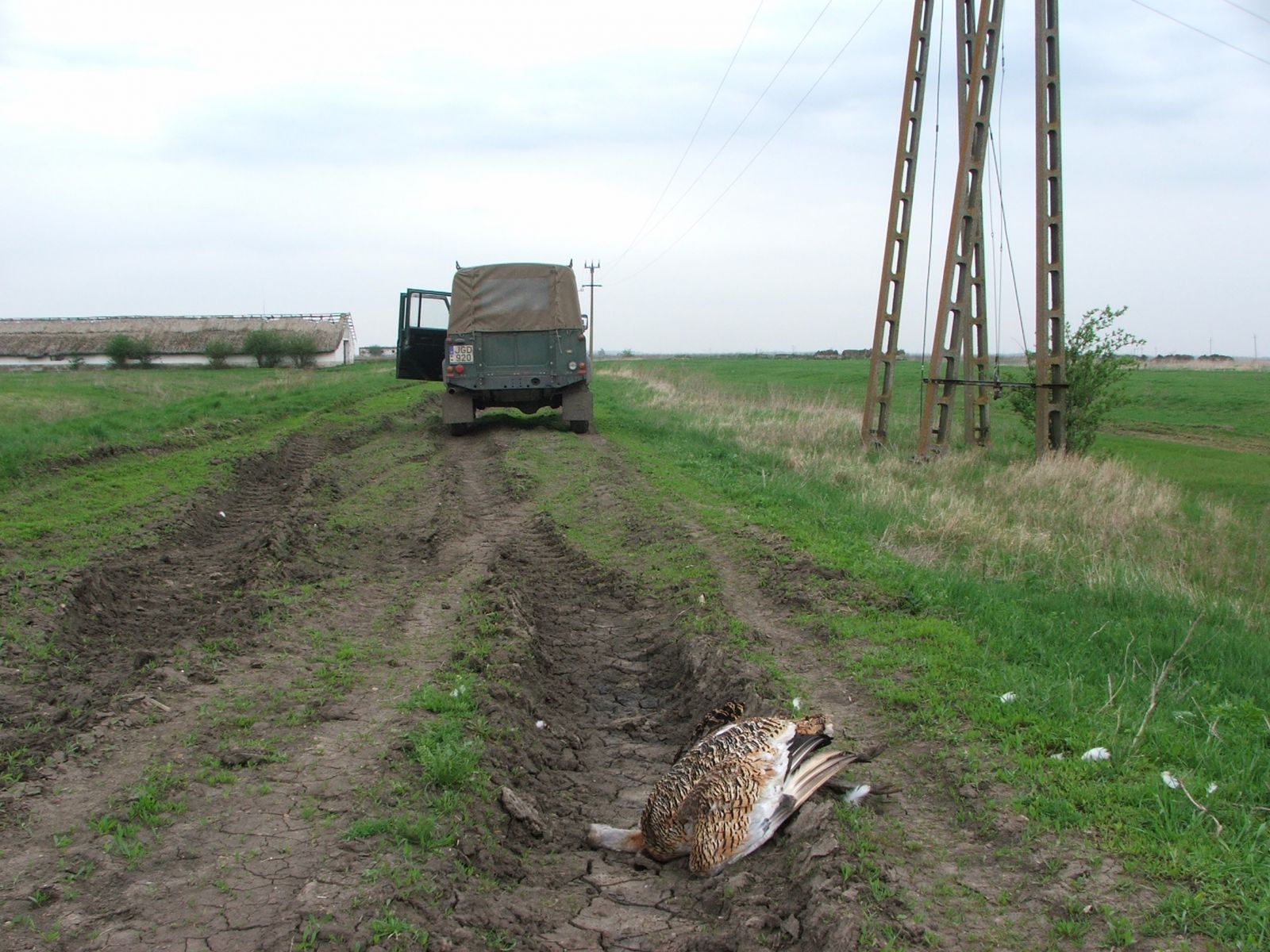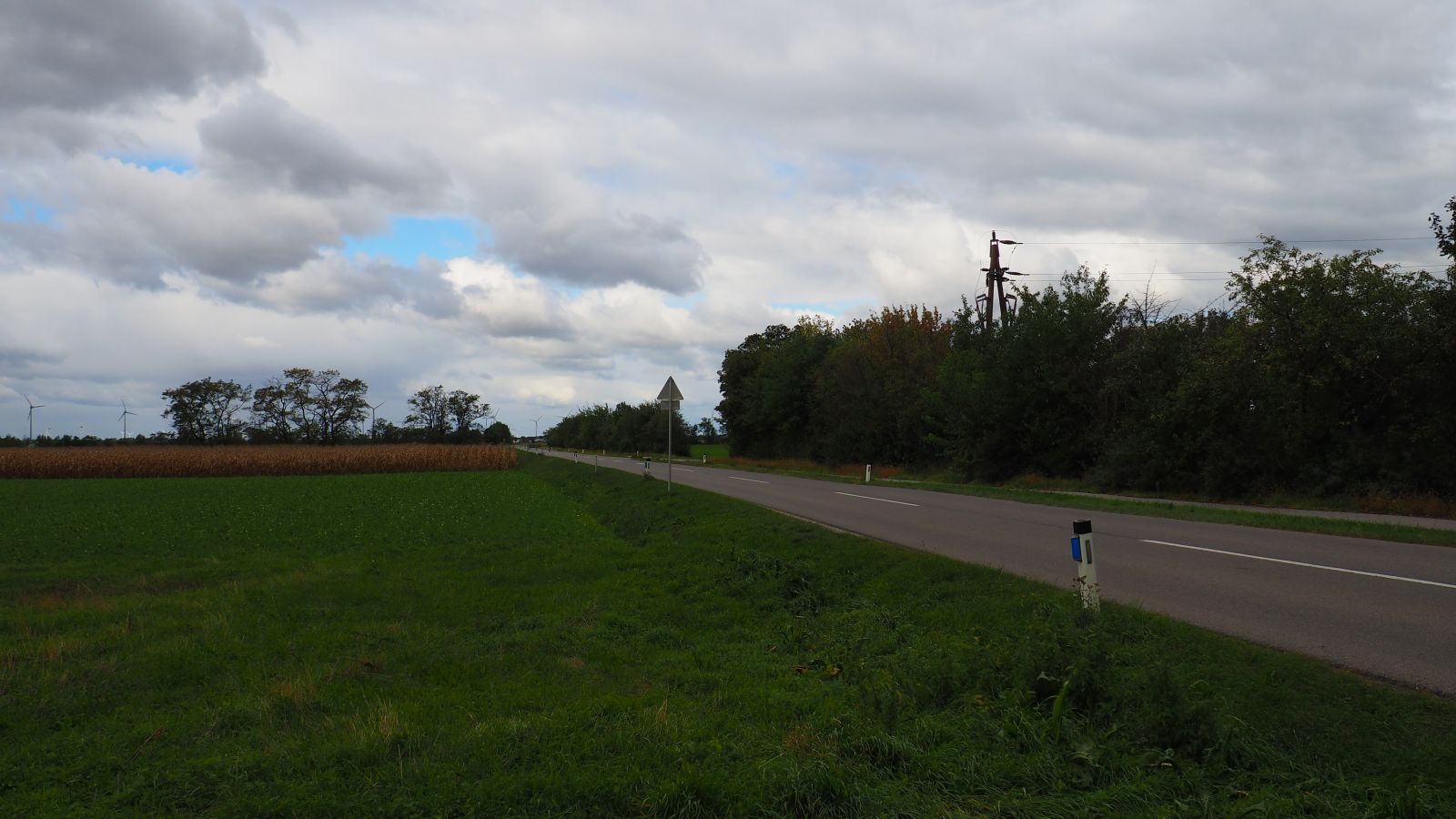The rehabilitation of the reed lake, a swamp that had become eutrophicated in the Culișer meadow, located in Salonta, Bihor county, has been carried out in the past 3 years within our project based on cross-border public-private partnership.
![Great Bustard: Factsheet III [threats and conservation measures]](/img/cache/45855884_261303501199465_192549826330624000_n_5a43d86897_1024x576.jpg)
Great Bustard: Factsheet III [threats and conservation measures]
1 May 2018

Collisions with medium-and high-voltage power lines are some of the most common risk and mortality factors for large birds.
Threats
- Just like other species, the Great Bustard is threatened mainly because of habitat loss. Initially, the grasslands were the bustard's habitat. Fortunately, the species has adapted to the environment of cultivated plants. However, without proper crop rotation, it cannot survive on agricultural lands. Over the years, the bustard's territories have shrunk and its habitat has been fragmented, making it more difficult to sustain viable populations.

an example of habitat degradation.
- The declining number of invertebrates (mainly insects). The lack of insects from the adults' diet may negatively affect the reproduction rate, but for the chicks, it may be fatal. The main cause is the use of pesticides, insecticides and chemical fertilisers.
- Different types of disturbances and intrusions, such as agricultural work, off-road racing motorcycles and quads, or the presence of man. The birds are highly sensitive to intrusions, especially during the mating and nesting season. When disturbed during display, mating will not occur and the female will lay unfertilised eggs. If the female is disturbed while incubating, she will leave the nest and might not dare to return. If they come back after a long time, the eggs can cool and they won't hatch.
- Mechanised agricultural works may kill the chicks when they are still unable to fly, especially while harvesting, spraying with chemicals or during mechanised mowing (i.e. lucerne).

medium-voltage power line. Photo: Motkó Béla
- Many birds perish because of collisions with transmission power lines. The medium-and high-voltage power lines are the biggest threat to large birds, such as the Great Bustard.
- Predation, once a natural factor, now represents a danger to the bustard. As a result of anthropogenic activities, the number of natural predators increased. Fox populations - a bustard predator - used to be kept under control by wolves and jackals. But these species either disappeared from these areas or are present only in very few numbers. Rabies could also lower the number of foxes, but the chemicals that are scattered from aeroplanes prevent this from happening. Beside the fox, the growing number of shepherd and stray dogs is another threat.
Conservation measures
For the conservation of the Great Bustard, several action plans and international conventions have been designed. Most signatory states also issued national conservation plans for the species, through which they carried out clear conservation actions. In Romania, the protection of the bustard is making only its first steps. In 2017, a practical measure has been made official: the agro-environment scheme for the conservation of the Great Bustard. Under the Bonn Convention, a memorandum was drawn up to conserve the central-east European bustard Memorandum of Understanding on the Conservation and Management of the Middle-European Population of Great Bustard). Romania signed this agreement in November 2000 at the IUCN World Conference in Amman, Jordan.

on the right, overhead power line.
-
-
Measures that can contribute to the conservation of the species:
-
• The protection of territories used by bustards through habitat conservation and avoiding its fragmentation;
-
• Ensuring that display and nesting sites will not be disturbed;
-
• Converting overhead power lines into the ground to avoid collisions;
-
• Encouraging and motivating farmers with compensatory payments for nature-friendly farming practices:
-
- • Crop rotation should be chosen cautiously in the bustard habitats. Example of ideal composition: 20% small grain cereals, a minimum of 40% perennial crops (lucerne, clover, legumes and grasses for fodder), a minimum of 10% oilseed rape;
- • The duration of the mechanised agricultural work must be regulated during the nesting period and when the chicks are unable to fly, so the reproduction success may not be negatively affected;
- • In case of finding nests during agricultural work, an area of protection should be designated around them;
- • By cultivating oilseed rape, food can be provided for in winter;
- • If the birds have enough food, the chance of migration decreases (many birds perish during migration)
- • Chemical-free farming ensures the sufficient quantity of invertebrates, which is vital for chicks and necessary for adults to survive in difficult times;
- • The reversion of low-quality arable land to grasslands. Since these lands cannot be farmed efficiently, they could be used to expand the bustards' habitats.
- The text is an excerpt from “The Mysterious Bustard” (available in Hungarian and Romanian).
- Authors: Kelemen Katalin, Nagy Attila and Papp Judith (Milvus Group)
- Photo credits: Motkó Béla

